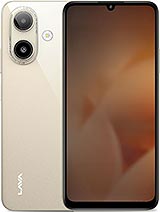Lava Yuva Star 4G alternatives
Tap above to see alternatives.
Oppo K13x alternatives
Tap above to see alternatives.
Lava Yuva Star 4G

Lava Yuva Star 4G
-
Unisoc SC9863A
28 nm
-
5000 mAh
10W
-
6.75"
720 x 1600 pixels
-
13 MP
1080p@30fps
- Specs
4x1.6 GHz Cortex-A55
4x1.2 GHz Cortex-A55
2x2.4 GHz Cortex-A76
6x2.0 GHz Cortex-A55
6GB 128GB (UFS 2.2)
8GB 256GB (UFS 2.2)
(wide), AF
OmniVision OV50D, f/1.8, (wide), PDAF
2 MP,
f/2.4, (Mono)
GalaxyCore GC08A8, f/2.0, (wide)
SIM1: Nano, SIM2: Nano
SIM1: Nano, SIM2: Nano (Hybrid)
9 5G bands
n1, n3, n5, n8, n28, n40, n41, n77, n78
In this performance comparison, the Oppo K13x with its Mediatek Dimensity 6300 (6nm) performs better than the Lava Yuva Star 4G with the Unisoc Unisoc SC9863A (28nm), thanks to superior chipset efficiency.
Oppo K13x offers 2 years of OS updates, whereas Lava Yuva Star 4G provides 1 years. For security updates, Oppo K13x offers 3 years of support compared to Lava Yuva Star 4G's 2 years.
Both Lava Yuva Star 4G and Oppo K13x use LCD screens. In terms of smoothness, Oppo K13x offers a higher 120 Hz refresh rate, ensuring fluid scrolling and animations. Both devices deliver the same brightness level at nits. Both phones have the same screen resolution.
Oppo K13x features a larger 6000 mAh battery, potentially delivering better battery life. Oppo K13x also supports faster wired charging at 45W, compared to 10W on Lava Yuva Star 4G.
Oppo K13x includes an IP65 rating, while Lava Yuva Star 4G lacks an official IP rating.
¹ Scores can vary even with the same chipset due to RAM, thermals, and software optimization.











